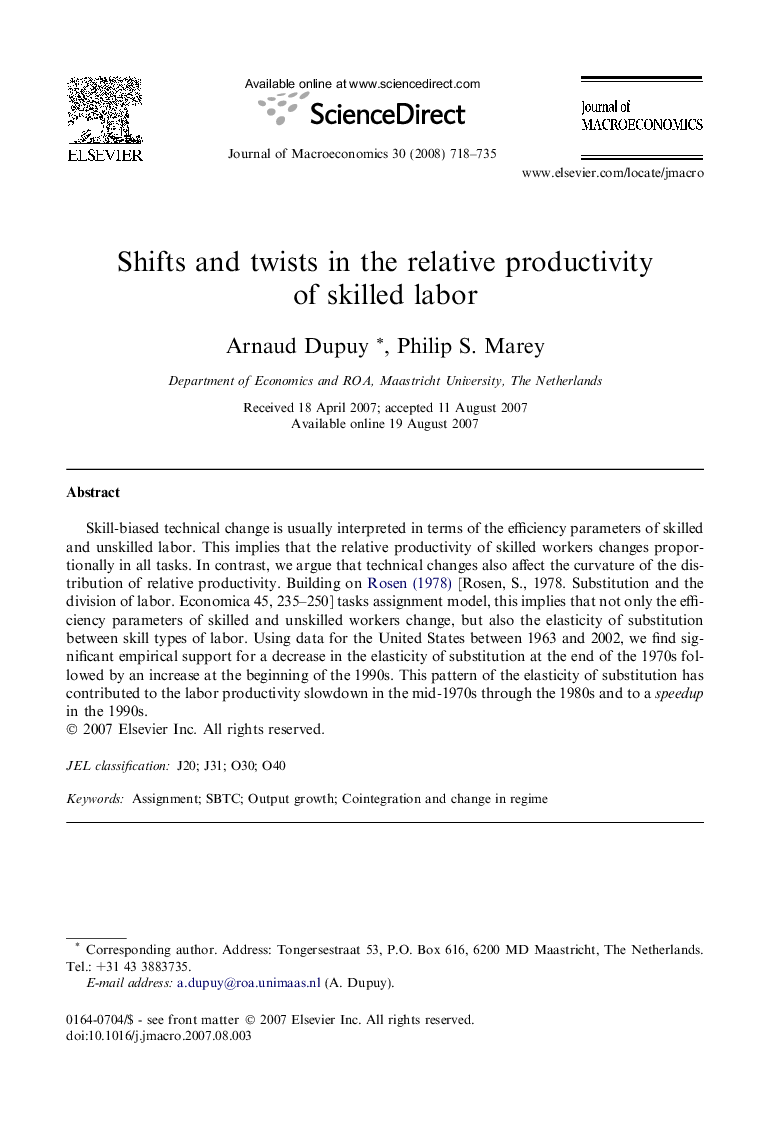| Article ID | Journal | Published Year | Pages | File Type |
|---|---|---|---|---|
| 966180 | Journal of Macroeconomics | 2008 | 18 Pages |
Abstract
Skill-biased technical change is usually interpreted in terms of the efficiency parameters of skilled and unskilled labor. This implies that the relative productivity of skilled workers changes proportionally in all tasks. In contrast, we argue that technical changes also affect the curvature of the distribution of relative productivity. Building on Rosen (1978) [Rosen, S., 1978. Substitution and the division of labor. Economica 45, 235-250] tasks assignment model, this implies that not only the efficiency parameters of skilled and unskilled workers change, but also the elasticity of substitution between skill types of labor. Using data for the United States between 1963 and 2002, we find significant empirical support for a decrease in the elasticity of substitution at the end of the 1970s followed by an increase at the beginning of the 1990s. This pattern of the elasticity of substitution has contributed to the labor productivity slowdown in the mid-1970s through the 1980s and to a speedup in the 1990s.
Keywords
Related Topics
Social Sciences and Humanities
Economics, Econometrics and Finance
Economics and Econometrics
Authors
Arnaud Dupuy, Philip S. Marey,
